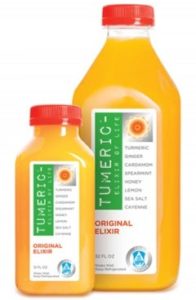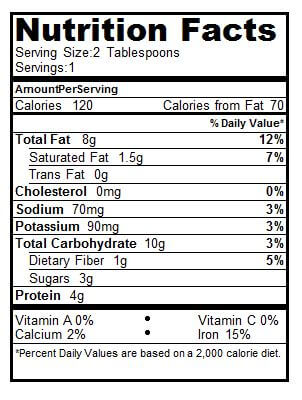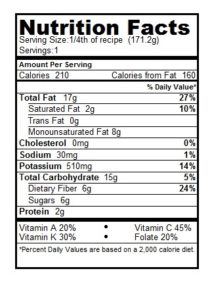T he good folks at Tumeric (no, that’s not a typo; that’s how the brand is spelled) recently sent samples of their turmeric-based juice drinks and power shots for me to review. Knowing my interest in diet and inflammation, I guess they figured I’d be impressed by a product-line based on one of the most anti-inflammatory spices in the world. They were right!
he good folks at Tumeric (no, that’s not a typo; that’s how the brand is spelled) recently sent samples of their turmeric-based juice drinks and power shots for me to review. Knowing my interest in diet and inflammation, I guess they figured I’d be impressed by a product-line based on one of the most anti-inflammatory spices in the world. They were right!
The traditional Indian ingredient is being heavily researched as a potential preventive for Alzheimer’s disease, cancer, and other inflammation-related conditions. And turmeric-based juices are a great new way to get more of this health-promoting spice into your diet.
The Tumeric brand elixirs offer a potent dose of fresh-pressed turmeric juice blended with traditional Indian herbs and spices. My favorite is the original elixir, a spicy combination of turmeric, ginger, cardamom, and cayenne (!), lightly sweetened with honey. A 12 ounce bottle contains 70 calories and 15g of sugar–about half the sugar of orange juice. The Golden Milk, made with turmeric, coconut cream, chia, and hemp milk, is more like a meal, with 270 calories, 11 g of protein, and 14 g of fat per bottle. (I’m not crazy about the taste of coconut cream, but if you are, this one is worth checking out.)
One advantage to the 3-oz, 70-calorie “PUREprana” shots is that they also feature black pepper, which enhances absorption of curcumin, the active ingredient in turmeric.
At $6 per 12-ounce bottle, this is definitely a premium product but one that’s unique, well-formulated and a nice addition to the category.


![7417277818_24db95a92e_z[1]](https://nutritionovereasy.com/wp-content/uploads/2015/03/7417277818_24db95a92e_z1-300x234.jpg)

 he good folks at Tumeric (no, that’s not a typo; that’s how the brand is spelled) recently sent samples of their turmeric-based juice drinks and power shots for me to review. Knowing my interest in
he good folks at Tumeric (no, that’s not a typo; that’s how the brand is spelled) recently sent samples of their turmeric-based juice drinks and power shots for me to review. Knowing my interest in 
